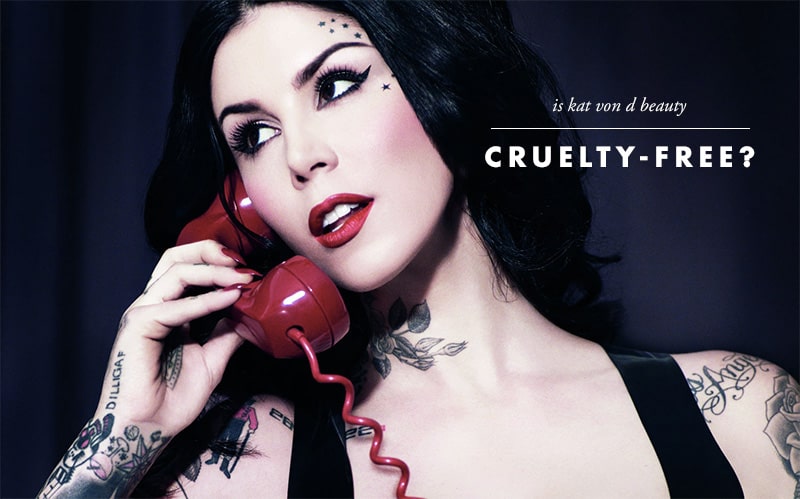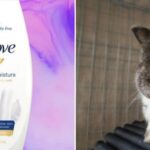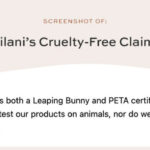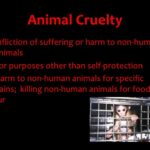In recent years, the beauty industry has witnessed a remarkable shift towards cruelty-free practices, urging consumers to scrutinize their purchases and the ethical standards of brands. One brand that frequently emerges in these discussions is Kat Von D Beauty. Founded by tattoo artist and television personality Kat Von D, the brand initially garnered acclaim for its striking aesthetic and vibrant products. However, as consumers become increasingly conscious about their purchasing decisions, the question arises: “Is Kat Von D Beauty animal cruelty-free or not?”
To address this query, it is crucial to examine the historical context of animal testing within the cosmetics industry. For decades, many companies relied on outdated and inhumane testing methods to evaluate the safety of their products. Test subjects, often rabbits, mice, and guinea pigs, endured painful procedures, suffering in silence while their plight remained largely unnoticed by the public. As advocacy groups like PETA and the Humane Society International championed animal rights, a growing contingent of consumers began to demand transparency and ethical practices from their favorite brands.
Kat Von D herself has consistently professed her disdain for animal cruelty. Early in her brand’s inception, she made a commitment to create a cruelty-free line that would appeal not only to the aesthetic-conscious but also to those with ethical concerns. The brand’s official stance has been that it does not test on animals at any stage of product development. This promise resonated strongly with many consumers who yearned for products that aligned with their compassionate values.
However, despite these assertions, scrutiny remains. In 2020, Kat Von D announced a decision to step away from her brand to pursue other endeavors. This transition raised questions about the future of her namesake line and the commitment to its founding principles. With new ownership, the spotlight shone brightly upon the paths the brand would take. Would it remain steadfast in its cruelty-free policies, or would it compromise these values in pursuit of growth and profit?
To understand whether Kat Von D Beauty is truly cruelty-free, it is important to investigate its supply chain. Brands often overlook the fact that ingredients sourced from suppliers must also adhere to cruelty-free practices. While Kat Von D Beauty maintains that it does not conduct animal testing, concerns have been raised regarding ingredients acquired from suppliers engaged in such activities. This complexity highlights the murky waters in which cruelty-free claims often exist, prompting consumers to delve deeper.
Moreover, consumers should understand the regulatory climate surrounding animal testing. In some regions, including parts of Asia, brands are required to conduct animal testing to sell their products legally. This situation creates a dilemma for companies wishing to expand their market reach. In recent years, several brands have opted to forfeit their cruelty-free status to enter these lucrative markets. Potential changes to Kat Von D Beauty’s distribution channels could thus introduce uncertainty about its cruelty-free commitment.
In light of these considerations, consumers must arm themselves with knowledge and discern the truth behind marketing claims. Many brands have adopted the cruelty-free label without rigorous verification processes in place. Organizations that offer certification can lend credibility to cruelty-free claims. Familiarizing oneself with these organizations, such as Leaping Bunny or PETA’s Beauty Without Bunnies program, can aid in determining whether a brand genuinely upholds its promise.
Another pivotal aspect of the conversation revolves around the consumer’s power and influence. The rise of social media has empowered individuals to voice their opinions and hold brands accountable. Activists and consumers alike can leverage platforms to demand answers, initiate conversations, and create transparency around company practices. If Kat Von D Beauty’s consumers express dissatisfaction or seek clarification regarding the brand’s animal testing practices, it may well expedite the adoption of stricter ethical guidelines.
Furthermore, it is vital to address the ethical implications of purchasing decisions in a broader context. Supporting cruelty-free brands not only aligns with compassionate values but also fosters a market demand for humane practices across the cosmetics industry. By demonstrating a conscious shift in preferences, consumers drive the necessity for brands to reevaluate their methodologies. Tangibly, when cruelty-free brands thrive commercially, it sets a benchmark for others to follow.
In conclusion, the inquiry into whether Kat Von D Beauty is animal cruelty-free is not merely a binary question; it embodies a complex tapestry of ethical considerations, consumer responsibilities, and evolving industry standards. While the brand has professed a commitment to compassion, the intricate web of supply chains, regulatory pressures, and market dynamics complicates the narrative. As consumers continue to wield their influence, transparency and integrity remain paramount. Ultimately, the pursuit of cruelty-free beauty extends beyond individual brands—it is a movement that demands accountability, compassion, and unwavering change within the entire industry.





